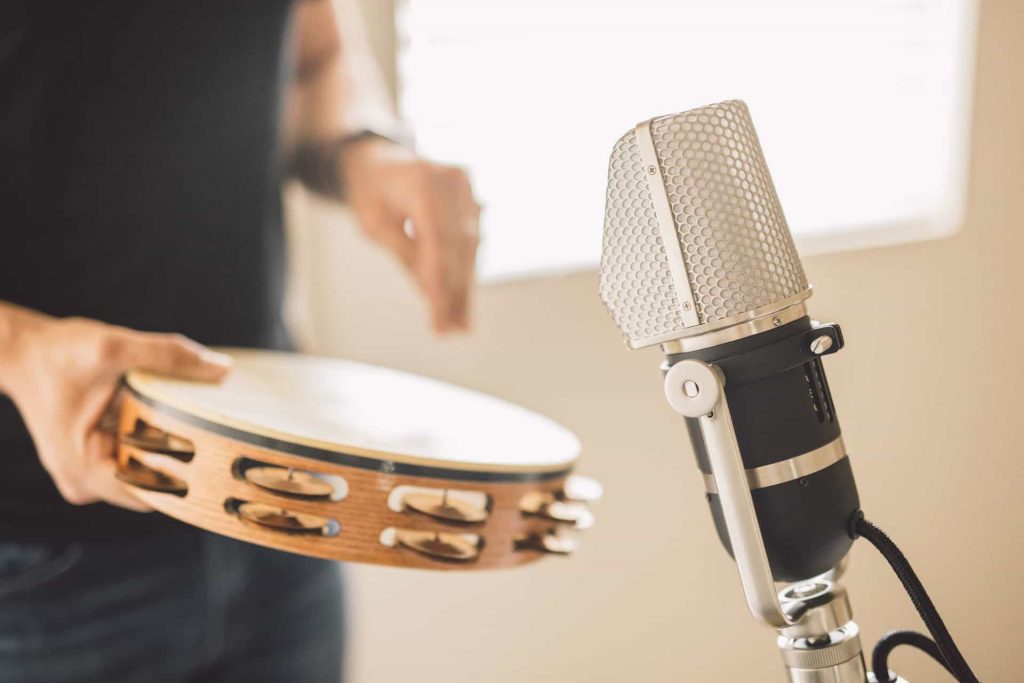The supercardioid KU4 is an outstanding mic for capturing a wide variety of percussion instruments. Whether recording triangle, congos, or timpanis, the KU4’s extensive top-end clarity and balanced low-end brilliantly complements the tonality of whatever percussion it captures. The KU4 is the brightest AEA mic in the line and performs well across any genre and in virtually any recording environment.

Close Miking
When recording percussion, it is recommended to position the KU4 2 to 16 inches from the source. Low-end response is controlled by moving the mic closer or farther from the source.
Every percussion instrument is different and therefore requires an understanding of the true sound source. Discovering the best treble/bass ratio entails listening to the results of the KU4 from different positions around the source. The KU4’s supercardioid polar pattern allows greater flexibility in placement by rejecting excessive bleed from other instruments.

The near-field design of the KU4 allows it to be positioned quite near the source, similar to a conventional dynamic microphone. Internal mechanics roll-off the low end of a signal before it reaches the ribbon, yielding balanced response between 2 and 18 inches from the source. The ribbon within the KU4 is well protected by precision fabric and is virtually impervious to loud volumes. Percussion that produces excessive blasts of air should be separated from the KU4 by a pop filter.